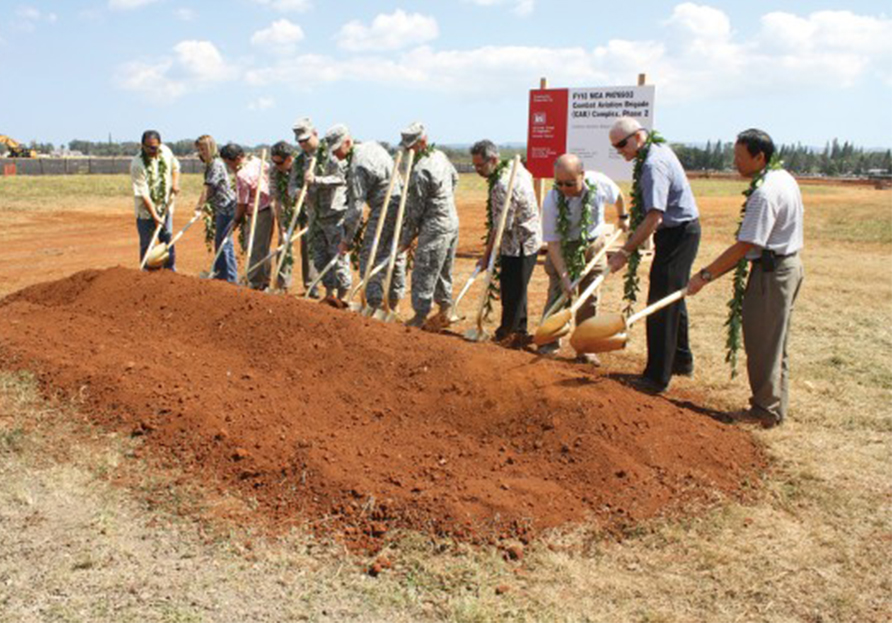WHEELER ARMY AIRFIELD — U.S. Army Garrison-Hawaii, the U.S. Army Corps of Engineers and contractor Nan-Samsung participated in a Hawaiian groundbreaking and site blessing, March 18, on the south side of the Wheeler airstrip, officially starting the construction for the second phase of the 25th Infantry Division Combat Aviation Brigade Complex.
The reverend Sherman Thompson led the Hawaiian blessing of the site for more than 60 CAB phase two workers and staff, and representatives from USACE- Honolulu District, the Directorate of Public Works, and the 25th CAB.
The $69.7 million project is the second of 16 additional phases required to complete the entire $1.6 billion CAB complex.
This project constructs two six-story standard design barracks that will accommodate CAB Soldiers in two-bedroom units.
The project is highly dependent upon the CAB phase 1 site infrastructure project for all roads and utilities and infrastructure.
Coordination is ongoing with phase 1 contractor David Boland to synchronize construction for the two phases, as the two barracks will be situated within the CAB phase 1 project site.
A design-build contract for the CAB phase 2 project was awarded to Nan-Samsung on May 13, 2014, for $69,749,203. The construction completion date is January 2017. Design was done by Group 70 International, Mitsunaga and Associates, Geolabs, Martin & Chock, InSynergy Engineering, Walters Kimura Motoda, and Facility Dynamics Engineering.
The Honolulu District is committed to building and managing the construction of high-quality projects that improve the quality of life for service members and their families and that provide jobs and money, which stimulate the local economy.
Primary facilities will include these:
- Central plant.
–With antiterrorism measures.
- An energy monitoring control systems connection.
–With sustainability/energy measures.
Supporting facilities will include these:
- Site development, utilities and connections.
- Lighting, paving, parking, walks, curbs and gutters.
- Storm drainage, information systems, landscaping and signage.
–Air conditioning will be provided by the central plant.
